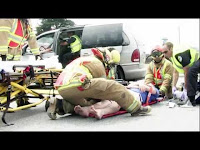As states and localities have begun to thrust themselves
into the newfound opening of local power on immigration matters, we see the
type of scene that would occur when teenage drivers first take the wheel: launching
hateful, reckless ideas, veering to the right because they don’t have a sense
of the road, and getting drunk and running into people.
Recently we've seen a series of laws passed that take away human rights. An Arizona law allows harassment by police and local detention, an Alabama law excludes children from schools and revokes any modicum of fair work standards from adults, and laws in several states prohibit undocumented youth from attending public colleges.
We find this adolescent understanding of undocumented
immigrants in this logic:
1)
We have ‘illegals’ invading!
2)
‘Illegals’ are criminals!
3)
We should eliminate them however we can! Yee
haw!
This unstudied approach neglects to consider things that are
outside of their immediate purview.
1)
Governments, at the behest of big business, have carefully nurtured the roots of undocumented immigration in their transnational
and international business and military dealings.
3)
Undocumented immigrants tend to have jobs that
most native-born Americans shun. In the words of Stephen Colbert in his
Congressional testimony,
“Because apparently, even the invisible hand doesn’t want to
pick beans.”
4)
The legal immigration system to the United States is a rusty bike with a chain that shrieks and jumps off the rungs every turn of the pedal. You get on again and again and make no progress towards your
destination. It doesn’t allow you to go anywhere, despite everyone just telling
you to jump on and go.
5)
Many undocumented residents have lived in a
place for a very long time, have carried their responsibilities of raising
their families (with far fewer resources than other residents), have paid their
taxes.
6)
Undocumented residents have much lower rates of crime than other residents. They are careful to be good neighbors lest it
result in their deportation.
Alabama passed and implemented parts of the most inhumane and exclusionary of the recently passed laws recently. Their policies
stand in stark opposition to the recommendations of the Police Foundation, an
independent, non-partisan, nonprofit foundation that researched local
interventions. Today, the New York Times editorial board rightly denounced the“disgrace” of Alabama’s “xenophobia”.
Their car is speeding down Main Street at rush
hour. Beware.




























